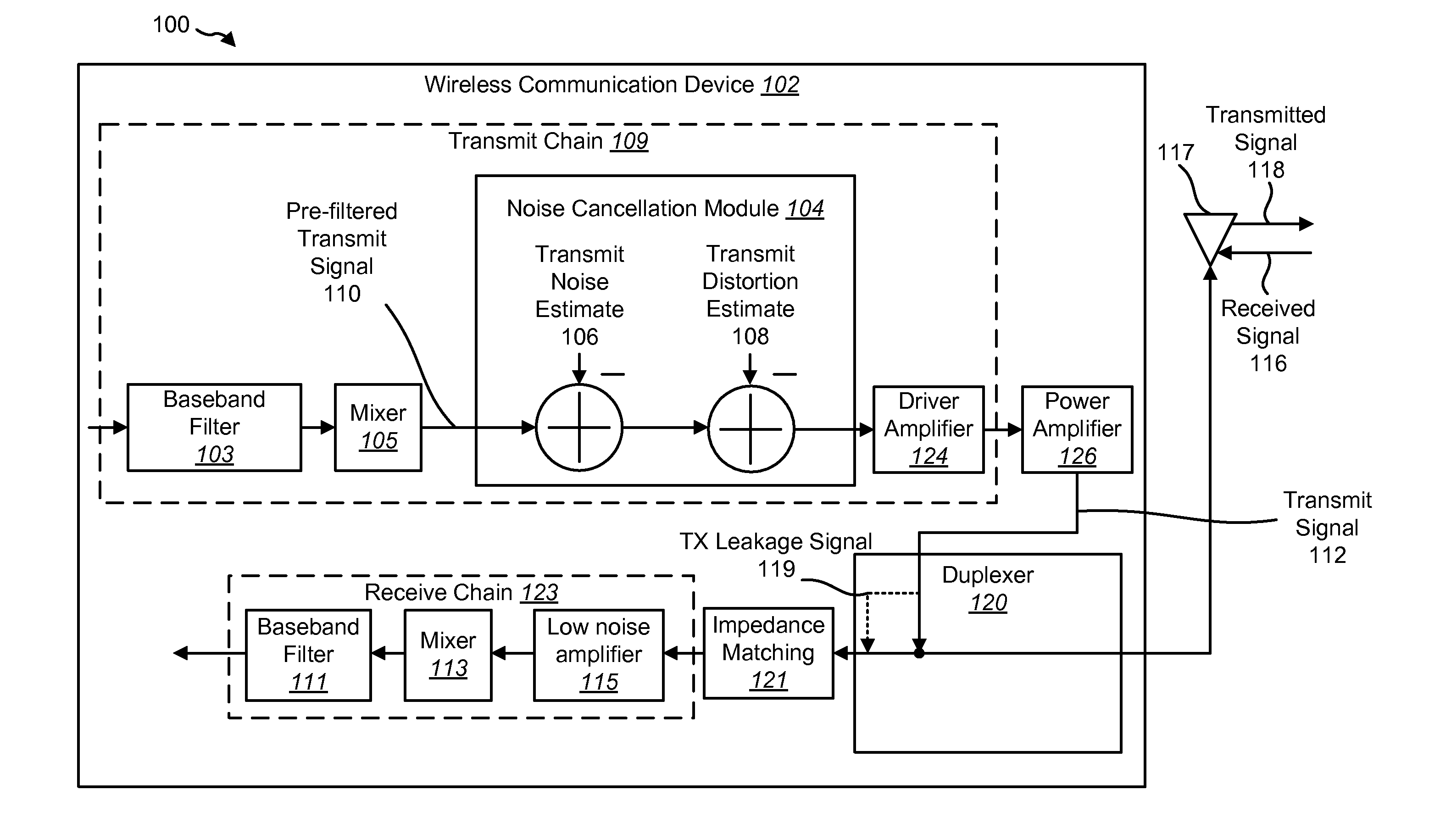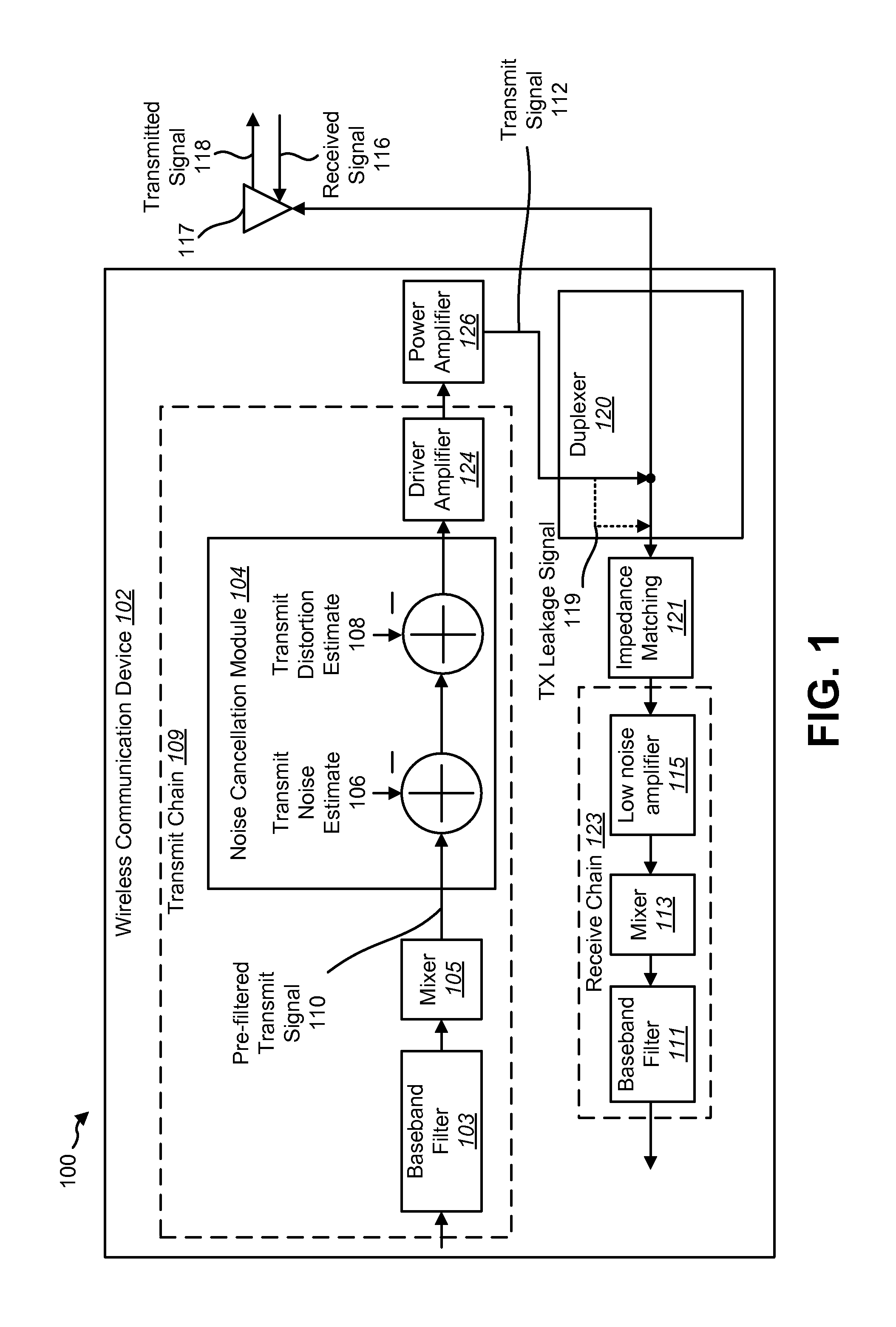Dual-loop transmit noise cancellation
a transmit noise and dual-loop technology, applied in the field of communication systems, can solve the problems of increasing the cost of both approaches, affecting the detection of desired incoming signals, and affecting the accuracy of the signal, so as to remove estimated transmit noise and remove estimated transmit distortion
- Summary
- Abstract
- Description
- Claims
- Application Information
AI Technical Summary
Benefits of technology
Problems solved by technology
Method used
Image
Examples
Embodiment Construction
FIG. 1 shows a wireless communication system 100 with a wireless communication device 102. A wireless communication device 102 may be a base station, a mobile device, or the like. A base station is a station that communicates with one or more mobile devices. A base station may also be referred to as, and may include some or all of the functionality of, an access point, a broadcast transmitter, a Node B, an evolved Node B, etc. Each base station provides communication coverage for a particular geographic area. The term “cell” can refer to a base station and / or its coverage area depending on the context in which the term is used.
A mobile device may also be referred to as, and may include some or all of the functionality of, a terminal, an access terminal, a user equipment (UE), a subscriber unit, a station, etc. A mobile device may be a cellular phone, a personal digital assistant (PDA), a wireless device, a wireless modem, a handheld device, a laptop computer, etc. A mobile device ma...
PUM
 Login to View More
Login to View More Abstract
Description
Claims
Application Information
 Login to View More
Login to View More - R&D
- Intellectual Property
- Life Sciences
- Materials
- Tech Scout
- Unparalleled Data Quality
- Higher Quality Content
- 60% Fewer Hallucinations
Browse by: Latest US Patents, China's latest patents, Technical Efficacy Thesaurus, Application Domain, Technology Topic, Popular Technical Reports.
© 2025 PatSnap. All rights reserved.Legal|Privacy policy|Modern Slavery Act Transparency Statement|Sitemap|About US| Contact US: help@patsnap.com



